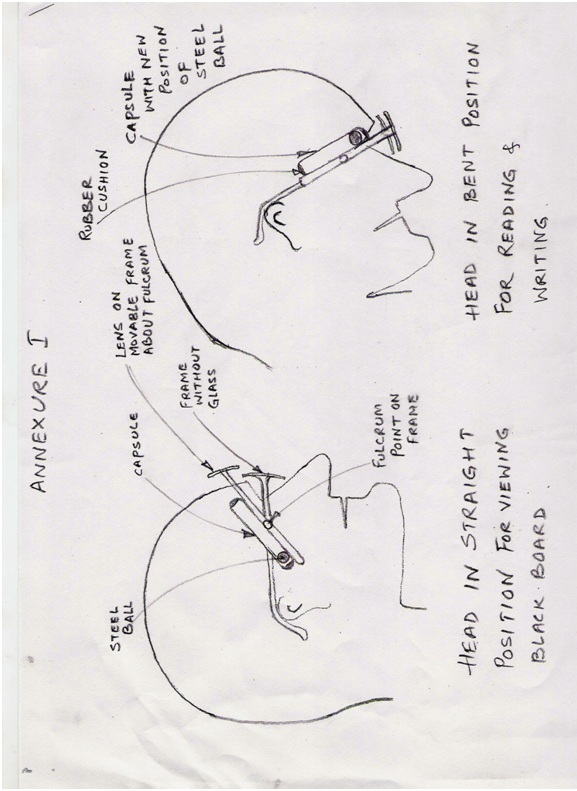OUR INNOVATION BRAIN MAPPING METHODOLOGY
SYSTEMATIC INNOVATING METHODOLOGY USING OUR INNOVATIVE “BRAIN MAPPING” PROCESS
Innovation is the only way to win in any situation, and remain ahead in the competitive world.
Anybody can innovate. We will teach you how to do it.
Attend our full day workshop to systematically generate ideas leading to innovation and also get professional recognition.
Innovation comes about through new combinations made by an individual / entrepreneur, resulting in
- a new product,
- a new process,
- opening of new market,
- new way of organizing the business
- new sources of supply
There are several types of innovation
- Process, product/service, strategy,
which can vary in degree of newness:
- Incremental to radical,
and impact:
continuous to discontinuous
Anyone attending this program will definitely be able to generate ideas worth implementing leading to innovation, putting down the thought process in a systematic way leading to innovation.
Results of innovation are as follows.
- A better edge over the competitors.
- Introduction of new product/ process.
- Brand Improvement
- Register for IPR and patent.
- Improved productivity
- Improved quality
- Optimised cost of the product.
- Opening up of a new market for the product.
We at empowered solutions have developed a new systematic result oriented way to innovate. This is conducted as a training session to the designers in any organisation. “A NOVEL WAY OF BRAIN MAPPING WITH SURE RESULTS.” Some of the systematic innovation training has resulted in innovations as shown below.
Some examples of innovations done using the above process is shown below.
INNOVATE AND DRIVE TO FUTURE THROUGH “VAVE” AND SYSTEMATIC INNOVATING METHODOLOGY USING OUR INNOVATIVE “BRAIN MAPPING” PROCESS
INDEX :
- Abstract:
- Innovate : Definition
- What drives the future – Innovation.(Examples of the changing world)
- Innovation in ‘Today’s world’.
- Some innovative spark / Ideas of the author which needs to go through the phases of value engineering for successful implementation.
1) ABSTRACT:
In today’s highly competitive environment, the key tool for survival is to be innovative. To have a higher edge over the competitor, the product or services are made uncommon or different from other. This is essentially achieved by means of innovation.
Innovation is now recognized as the most successful strategy for profitable growth, capturing market share, and even surviving.
The steps in innovation process can be compared to the various phases in ‘Value engineering’. As an example – In an organization every employee is made to innovate a new way of doing the work that he or she has been always been doing. The result of this unique thinking and implementing would lead to an exclusively different product or services which would be quite different and unique as compared to the existing one. This product or services from the result of unique thinking would definitely give an edge over the competition. Hence Innovation provides a long-term strategy for success.
In this article emphasis has been made in using the help of value engineering tools in innovation, as this is going to be the driver of the future in the fierce competitive world.
Numerous examples have been put in the article which has employed the innovative principle to obtain an edge over the other and beat them in competition. In the end some innovative ideas of the author has been shown. These are simple raw ideas and spark for the journey ahead to convert them to real competitive product, using the tools of value engineering techniques.
2) Innovate: Definition,
“The intentional introduction and application within a role, group or organisation of ideas, processes, products or procedures new to the relevant unit of adoption designed significantly to benefit the individual, the group, the organisation or wider society”
Creativity concerns the generation of new ideas. Innovation also includes the implementation of those ideas. Hence
Innovation = Creativity + Implementation.
The biggest secret of innovation is that anyone can do it. The reason is simple: It’s just not that hard. Look up the word “innovate” in any dictionary and see what it actually means you’ll find something like this: To innovate is “to introduce something new.”
Innovation starts from the 1st phase of value engineering – ‘Orientation phase’
To go ahead with the orientation phase we should seek answers to the following questions, on Why, what, how and when.
So the questions to be answered are as follows.
- Why to innovate?
- What to innovate?
- How to be innovative?
- When to innovate?
Why to innovate?
The answer to this question is already found in the abstract part of this article. You need to be different than the normal, to have an upper edge over the competitor; one of the factors to achieve this is to innovate.
What to innovate?
Though innovation can also be achieved though an individual thinking process, but to obtain a structured result which can be implemented through innovation requires collective thinking.
What to innovate is a team activity looking for something different. In this process the team is required to gather as many data as possible in terms of the following.
- Performance difference with respect to the competitor
- Feature differences with respect to the competitor.
- Cost difference with respect to the competitor.
- Amalgamation of individual ideas to drive through the future into the competitive world.
What to innovate also comes from the principle of imaginative thinking. Think of something new and different applicable to your product or services. This involves the following process.
- Think of the problems you are faced with, in today’s world. Problems faced in your day to day work. Problems faced outside the company’s environment. Problems faced in the society you live in. In short any kind of problems that you come across.
- Imagine what happens if these problems were not there, that is visualising the effect of innovation before implementation.
- Look back into what can give these results, and how to achieve these results. Brain storming with the above results and objectives in mind would help in the innovation process.
However innovation in a competitive environment would require a team work as follows.
Orientation Phase:
Formation of a team is suggested in the orientation phase.
The team should consist of experts in different field aligned to a common goal.
To be innovative the team should have the following qualities.
1) You must have knowledge of a field to produce something novel within it!
2) Importance of knowing the territory
3) Development of out of the box thinking
4) Identification of problems / sensing gaps
Information Phase:
During this phase collection of various data on the existing or the current product and of the competitor’s are collected. Analysis is carried out based on what is different in the competitor as compared to our product and how much this difference is effecting the business and so on…..
The data available from the information phase is very much helpful in decision making to carry forward the proposals.
Functional and creative Phase:
In this phase, you identify the product and services and the associated problems. Identify the primary and secondary function of the product and services. In the creative phase conduct brain storming sessions for collecting ideas related to the secondary functions which will give a change from the existing.
Example: Facelift cars every two year.
Evaluation Phase:
The proposals so generated are filtered out for most appropriate with the help of the senior management. Some preliminary analysis is carried out for feasibility of the proposals by means of CAD analysis – if the proposal is related to feature change in the product Market research can be carried out to ascertain a positive response to such a change, and assure business.
Development Phase:
Once the innovative change in the product or services is approved and given a go ahead by the management. The product or services goes through a development phase process, wherein the Change is carried out at an experiment level, to assure that it does not effect or compromise on the primary function of the product.
Recommendation Phase:
During this phase the product or services is introduced in the market and actual customer response is monitored. Based on the performance and monitoring results minor changes in the product or services are carried out as recommended by the management to improve the product or services.
Implementation Phase:
The result of the product or services thus evolved goes through the implementation phase. Under this phase the full introduction of the modified product or services is planned. Necessary tooling or infrastructure changes if required are planned and implemented. Necessary capital sanctions are obtained from the management for implementation of the innovative change to achieve better results and an edge over the competition.
Follow up Phase:
Lastly after implementation of the proposal it is essential that a follow up continues, to see the success of the implementation, in terms of increased sales / Turnover.
- What drives the future:
Innovation in ‘Today’s World’.
We have come a long way from the 19th century to the 20th century. There has been tremendous change seen in the following areas.
- Communication
- Transport
- Electronics
- Service industry – Banks, Hospitals, Hospitality industry ….etc
Communication:
Looking back to the 19th century you can recall the pathetic way of communicating with people. Long distance communication was a dream. Today almost every third man in the country owns a mobile phone.
The introduction of Internet and computers has revolutionized the way we communicate with people across the world ion minutes through mails and SMS, gone are the days of Telex and telegrams.
Transport:
The transport industry has seen a remarkable change in the 20th century with all OE manufacturers putting their best in terms of fuel efficiency and meeting emission norms at the same time being the most cost competitive. It has also to some extent wiped out those who did not want to change with the changing times. An example to this is the introduction of Aluminum in place of Brass as heat exchangers.
Electronics:
Home entertainment and industrial electronics have changed the way entertainment was looked at in the 19th century. ‘Thomas Alva Edison’ invented the first filament bulb, he never though that with the electronic evolution the world would move towards CFL Lamps. Also the changing face of Industrial electronics has changed the way the industry use to operate in earlier days. It has introduced more reliability in manufacturing process, reduction in manpower and lowered manufacturing costs.
Service industry:
The service industry has also not been left behind. Look at the way we do banking today, the service that is provided at the airport and railway stations. The help provided to you in the hospitals are remarkably changed our lives.
5) Some innovative spark / Ideas of the author
The biggest secret of innovation is that anyone can do it. The reason is simple: It’s just not that hard. Look up the word “innovate” in any dictionary and see what it actually means, instead of what you think it means. You’ll find something like this: To innovate is “to introduce something new.”
Please find below some of the innovation done by the author. The proposals are know as initial sparks, and needs various support to turn into fire or cultivable energy. In other words these proposals are very raw and needs to go through the various phases of value engineering to take advantage and use them for the benefit of the common man.
- Automatic spectacles (Annexure I )
- Two in one kerosene / Gas lamp for cooking and lighting. (Annexure V )
- Air conditioned Helmet (Annexure VI)
- The un-chockable sink ( Annexure VII)
- Revolutionary tooth brush. (Annexure VIII )
- Automatic car shade. (Annexure IX )
Identified Other areas of innovation by the author:
The author has come across various difficulties and problems faced in day to day life for which we need to find out a solution. Some such problems which are being attended to by the author is being put up here, some food for thoughts for everyone who can contribute.
- Maneuvering a car that would snuggly fit in an available parking slot. (hydraulically lowered castor wheel – power steering pump to be used for raising the car on castor wheels.)
- Chair/ Stand that can climb stair case for the old and disabled. (stair case climbing chain / wheel should feel like standing on an escalator.)
- Low cost crash safety for vehicle, and cars drivers and co drivers.(Rotating sea)
- Tyre bust safety and pucture relief with additional tyres in automobile.
- Seat belt for two wheelers with small safety wheels on leg guard.
As an example to propagate the concept of ‘Innovate N drive to future through value engineering’ we shall pick up one example of the ‘automatic spectacles’ which would be discussed at length,
- Concept
- FAST Diagram (Ref Annexure II)
- Paired comparison. (Ref Annexure III)
- Value analysis / Decision Matrix ( Ref Annexure IV)
- Conclusion
Concept of an ‘Automatic spectacles’
Many a times you must have got irritated with your spectacles which you were forced to wear as you approached your forties. Not only the irritation of wearing the spectacles, but more annoying is the need to remove and put back your specs if you have to frequently see near and far objects object. As an example you wear a reading glass to read and write but cannot see the black board in a class room. You are forced to remove your specs for looking at the board and put them back for righting notes. This is really troublesome. Hence the idea of the automatic spectacles came into existence. The idea is simple and the construction and working is as follows, for a person who wears reading glasses.
Construction details (Refer Annexure I )
- It uses two frame
- One fixed and the other moving about the fulcrum
- Above the fulcrum on the moving frame is fixed the spec glasses.
- On the moving frame is an encapsulated tube with a free moving steel ball.
Functional details
- Under normal condition the moving frame will rest on the stationary frame when the person is reading or writing with his head bowed down.
- In this position the steel ball is in one end of the capsulated tube.
- As the head is moved up, the steel ball starts moving to the other end of the encapsulated tube crossing the fulcrum point.
- Thereby the weight of the steel ball is good enough to lift the moving frame up about the fulcrum.
- The above thus enables the glass of the spectacles to move off for viewing the black board.
- The opposite can be made possible by changing the angle of the encapsulated tube.
FAST diagram (Refer Annexure II)
Paired comparison. (Ref Annexure III)
Value analysis / Decision Matrix ( Ref Annexure IV)
6) Conclusion:
All these examples prove that the trick to innovation is to widen your perspective on what qualifies as new. As long as your idea, or your use of an existing idea, is new to the person you are creating it for, or applies an existing concept in a new way, you qualify as an innovator from their point of view, and that’s all that matters. Further going ahead in implementation of the innovation to drive the future of a successful business, is what every one is looking for. The implementation of innovation can best be done through use of value engineering tools and techniques as explained in the article above.
Author Deepak Asthana
Annexure 1


ANNEXURE III
Evaluation through paired comparison.
Sr No Criteria Score Rank
A Performance 30 1
B Simplicity in design 25 2
C Comfort to wear 20 3
D Ease of Manufacturing 15 4
E Cost Effective 10 5

ANNEXURE IV
Scale : 1 to 10 points

ANEXTURE V

AND MANY MORE IF INTERESTED PLEASE ENROLL FOR OUR TRAINING PROGRAM




